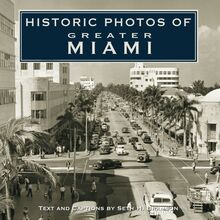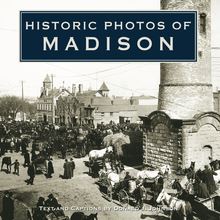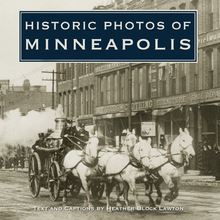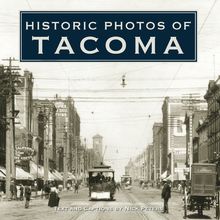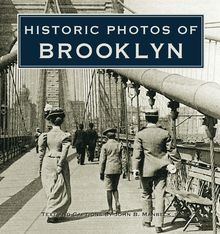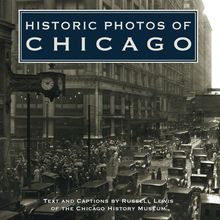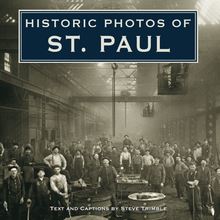Historic Photos of Arizona , livre ebook
187
pages
English
Ebooks
2009
Vous pourrez modifier la taille du texte de cet ouvrage
Obtenez un accès à la bibliothèque pour le consulter en ligne En savoir plus
Découvre YouScribe en t'inscrivant gratuitement
Découvre YouScribe en t'inscrivant gratuitement
187
pages
English
Ebooks
2009
Vous pourrez modifier la taille du texte de cet ouvrage
Obtenez un accès à la bibliothèque pour le consulter en ligne En savoir plus
Publié par
Date de parution
01 avril 2009
Nombre de lectures
4
EAN13
9781618585981
Langue
English
Poids de l'ouvrage
9 Mo
Publié par
Date de parution
01 avril 2009
Nombre de lectures
4
EAN13
9781618585981
Langue
English
Poids de l'ouvrage
9 Mo
HISTORIC PHOTOS OF
ARIZONA
T EXT AND C APTIONS BY L INDA AND D R . D ICK B USCHER
No frontier town in America has more legends and historic lore than Tombstone, Arizona. The mythic town too tough to die has fed America s hunger for stories of the Wild West for over 100 years. At least a dozen television shows and movies have been produced concerning the famous Gunfight at the OK Corral, which took place in Tombstone on October 26, 1881. Some of the most famous outlaws and lawmen of the Old West walked the streets of Tombstone during the 1880s.
HISTORIC PHOTOS OF
ARIZONA
Turner Publishing Company
www.turnerpublishing.com
Historic Photos of Arizona
Copyright 2009 Turner Publishing Company
All rights reserved.
This book or any part thereof may not be reproduced or transmitted in any form or by any means, electronic or mechanical, including photocopying, recording, or by any information storage and retrieval system, without permission in writing from the publisher.
Library of Congress Control Number: 2008941039
ISBN-13: 978-1-59652-518-4
ISBN 978-1-68442-075-9 (hc)
C ONTENTS
A CKNOWLEDGMENTS
P REFACE
W ILD W EST T ERRITORY (1850-1899)
S TATEHOOD AND C HANGE (1900-1919)
M ODERN A RIZONA T AKES S HAPE (1920-1939)
D ESERT A IRFIELDS AND P OSTWAR G ROWTH (1940-1970)
N OTES ON THE P HOTOGRAPHS
The first Southern Pacific Railroad steam locomotive to cross this bridge at Yuma, Arizona, did so on September 30, 1877. The bridge contained a swinging span that would open to allow the many Colorado River steamboats to pass underneath safely. Fort Yuma is visible on the California side of the river.
A CKNOWLEDGMENTS
This volume, Historic Photos of Arizona , is the result of the cooperation and efforts of many individuals, organizations, and corporations. It is with great thanks that we acknowledge the valuable contribution of the following for their generous support:
Library of Congress
Arizona State Library, Archives and Public Records, History and Archives Division, Phoenix
-------
We would like to thank our lifelong Arizona traveling companions and friends Teresa and Ken Jackway. Without their support and thirst for adventure, our knowledge and love of Arizona would be incomplete, and so our lives less blessed.
In special memory of our beloved cat, Valentino, who we lost while completing this book. We sure did love that cat!
P REFACE
Arizona has thousands of historic photographs that reside in archives, both locally and nationally. This book began with the observation that, while those photographs are of great interest to many, they are not easily accessible. During a time when Arizona is looking ahead and evaluating its future course, many people are asking, How do we treat the past? These decisions affect every aspect of the city-architecture, public spaces, commerce, infrastructure-and these, in turn, affect the way that people live their lives. This book seeks to provide easy access to a valuable, objective look into the history of Arizona.
The power of photographs is that they are less subjective than words in their treatment of history. Although the photographer can make decisions regarding subject matter and how to capture and present it, photographs do not provide the breadth of interpretation that text does. For this reason, they offer an original, untainted perspective that allows the viewer to interpret and observe.
This project represents countless hours of review and research. The researchers and writers have reviewed thousands of photographs in numerous archives. We greatly appreciate the generous assistance of the organizations listed in the acknowledgments of this work, without whom this project could not have been completed.
The goal in publishing this work is to provide broader access to this set of extraordinary photographs that seek to inspire, provide perspective, and evoke insight that might assist people who are responsible for determining Arizona s future. In addition, the book seeks to preserve the past with adequate respect and reverence.
With the exception of touching up imperfections that have accrued with the passage of time and cropping where necessary, no other changes have been made. The focus and clarity of many images is limited to the technology and the ability of the photographer at the time they were taken.
The work is divided into eras. Beginning with some of the earliest known photographs of Arizona, the first section records photographs through the end of the nineteenth century. The second section spans the beginning of the twentieth century through World War I. Section Three moves from the 1920s through the 1930s. The last section covers the World War II era to recent times.
In each of these sections we have made an effort to capture various aspects of life through our selection of photographs. People, commerce, transportation, infrastructure, religious institutions, and educational institutions have been included to provide a broad perspective.
We encourage readers to reflect as they go walking in Arizona, strolling through its parks, its countryside, and the neighborhoods of its cities. It is the publisher s hope that in utilizing this work, longtime residents will learn something new and that new residents will gain a perspective on where Arizona has been, so that each can contribute to its future.
-Todd Bottorff, Publisher
This view is facing west on Gurley Street in Prescott in 1877 when Prescott was the capital of the Territory of Arizona. Prescott citizens believed their town would remain the territorial capital and someday become a state capital. Little did they know that the legislators of Tucson and Phoenix would band together and move the territorial capital to Phoenix in 1889. The mountain in the background is Thumb Butte, a favorite hiking destination then and now.
W ILD W EST T ERRITORY
(1850-1899)
Most of present-day Arizona became part of the United States in 1848 with the ending of the Mexican War and the signing of the Treaty of Guadalupe Hidalgo. The section south of the Gila River would join the rest of Arizona (still part of the Territory of New Mexico at the time) with ratification of the Gadsden Purchase in 1854. On February 24, 1863, Arizona became a separate territory.
American Indian cultures had been present in the Arizona region since prehistory. Arriving around 300 B.C ., the Hohokam people would farm the area by means of hundreds of miles of irrigation canals. In the years just before European contact, 17 distinct tribes called the region home.
Europeans had been fascinated by this harsh yet beautiful land with its lure of mineral wealth since Spanish conquistador Francisco Vasquez de Coronado led an expedition in search of the Seven Cities of Cibola in 1540. Coronado failed to find those minerals, which lay underground, because he thought they would be adorning the streets of fabulous cities, as Hern n Cort s had found in 1519 at Tenochtitl n. The Jesuit priest Father Eusebio Francisco Kino arrived in 1687, but he was in search of souls more than gold. When Spain s control crumbled in 1821, the region became the northern frontier of Mexico until ceded to the United States in 1848.
After gold was discovered at Sutter s Mill in 1848, thousands rushed across the Southwest to reach the California gold fields. A Civil War battle was fought in Arizona at Picacho Peak, between present-day Phoenix and Tucson, in 1862. Both events prepared Arizona for its most famous role-as an archetypal Wild West territory.
The Territory of Arizona grew up right in the middle of the Wild West era-roughly the 20 years from 1865 to 1885. The names of Arizona cowboys became known around the world. Good guys and bad guys roamed the streets in town after town, creating stories that are still told today. At the same time, a great Apache medicine man, Geronimo, led his people in resistance against overwhelming military odds, then negotiated a peace that saved his people from extermination.
Developed in the late 1870s and 1880s, the territory s first large copper mines connected both worlds-the Wild West and modern industry-and pointed Arizona to a fast-approaching new century.
The dream of striking it rich has been a part of Arizona s story since the first Spanish conquistadors arrived. For the vast majority of treasure seekers, prospecting in the rugged wilderness of Arizona ended in failure. Some, like this explorer photographed on his way to Arizona s diamond fields, sought riches that existed only in the made-up stories of other men. The diamond fields of Arizona were a hoax of the early 1870s.
Conflict between settlers and the many bands of Southwest Apache Indians escalated with the Camp Grant Massacre of April 30, 1871, in which an estimated 144 Aravaipa and Pinal Apaches were slaughtered in a raid at dawn by a vigilante group of Anglos, Mexicans, and Tohono O odham Indians. All but 8 of the Apaches killed were women and children. More than a hundred men were tried for murder, but none were convicted. For another 15 years, the Apache Wars raged throughout southeastern Arizona. They ended with the surrender of Geronimo on September 4, 1886. Here a group of United States Cavalry takes part in one of the many battles between soldiers and Apaches during this tragic time in Arizona s history.
San Xavier del Bac is located on the Tohono O odham Reservation some 10 miles south of downtown Tucson. The great Jesuit priest Eusebio Francisco Kino first visited the native people of Bac in 1692, hoping to move his missionary headquarters there. Photographed around 1870, this church was constructed by Franciscan priests between 1783 and 1797 and is still a living church today, serving the people of the Tohono O odham Nation and thousands of visitors.
The interior of San Xavier del Bac is a living museum of some of the best examples of mission architecture found in the United States. The interior is a blend of Moorish, Byzan





